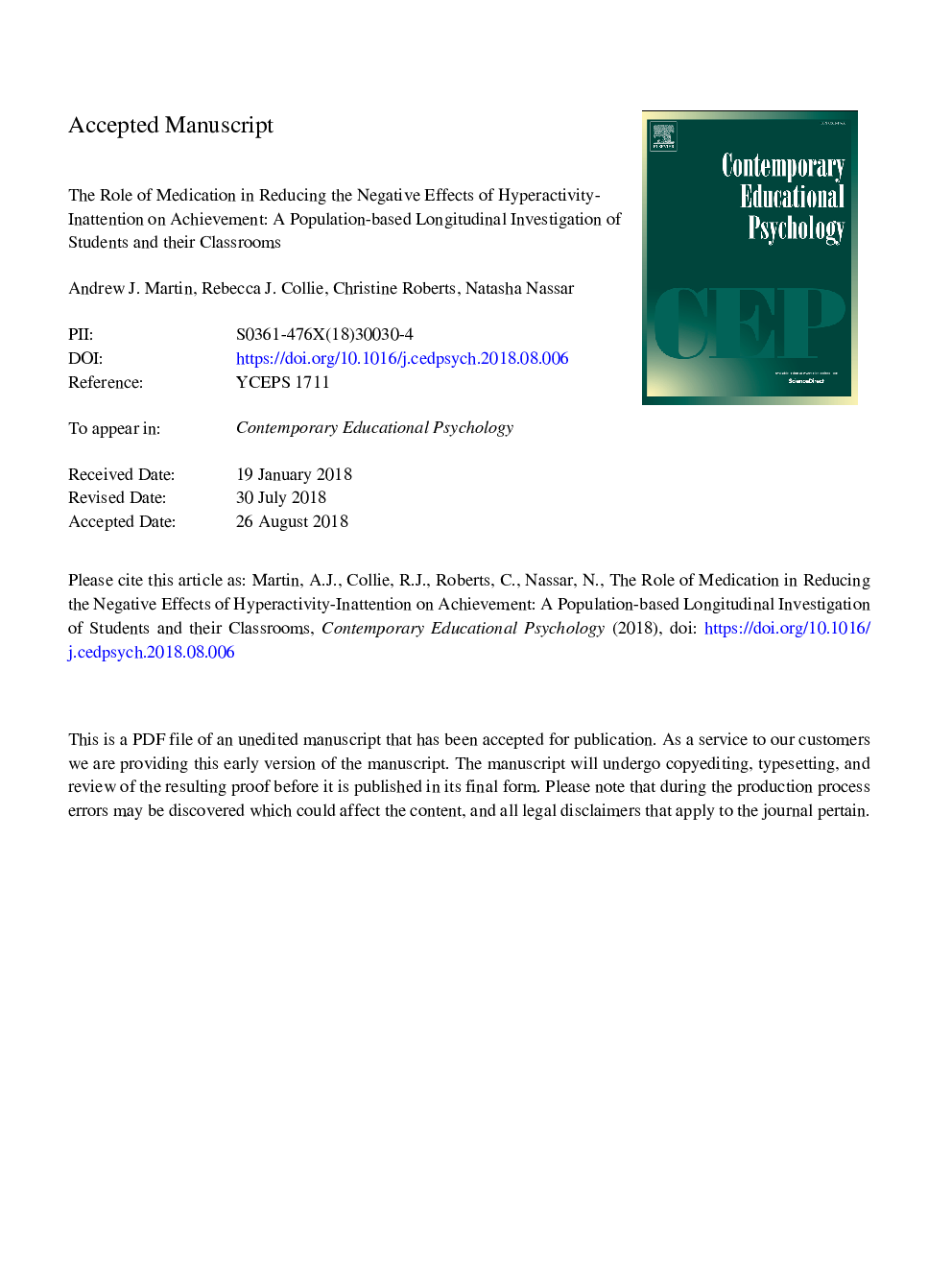| Article ID | Journal | Published Year | Pages | File Type |
|---|---|---|---|---|
| 10127034 | Contemporary Educational Psychology | 2018 | 51 Pages |
Abstract
The present study investigated the role of psychostimulants (methylphenidate, dexamphetamine; prescribed to participants for diagnosed attention-deficit/hyperactivity disorder; ADHD) in reducing the negative effects of hyperactivity-inattention (H-I) on achievement through elementary school. Whereas the bulk of research investigating H-I and medication has focused on students (conducting student-level analyses), research into classroom climates and processes suggests this issue be examined at both student- and classroom-levels. The sample comprised 54,165 Australian students (from 5419 classrooms) for whom H-I data were available in kindergarten and achievement data were available in year 3 and year 5. In preliminary variance components analyses, findings showed there was notable variation in H-I and psychostimulant status from classroom to classroom. In multilevel path analysis, at both student- and class-levels psychostimulants reduced the negative effects of H-I on student achievement, to a level where H-I had no significant negative impact on achievement. These effects were not moderated by dosage or psychostimulant type. Taken together, our findings add to the body of effective multi-modal educational and psychological interventions used to enhance the achievement outcomes of individual students who present with ADHD and-of particular note and novelty in this study-the classrooms to which they belong.
Keywords
Related Topics
Social Sciences and Humanities
Psychology
Applied Psychology
Authors
Andrew J. Martin, Rebecca J. Collie, Christine Roberts, Natasha Nassar,
